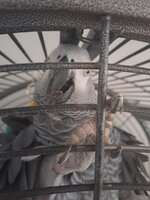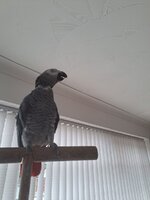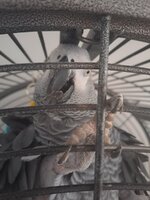I took the best picture that I could on the biggest beak in the house. Levi knows what open your beak means and he's very good about it but he did not like camera up in his beak! lol He is a very old man and his beak is really molting, I have been meaning to clean it up for him but its been so hot I have avoided stressing him. If you look you will see what I am talking about I put arrows on the photo to point the dots out. The little dots along the edge of the inside of his beak are called mechanoreceptors.
Mechanoreceptors detect stimuli such as touch, pressure, vibration, and sound from the external and internal environments. They contain primary sensory neurons that respond to changes in mechanical displacement, usually in a localized region at the tip of a sensory dendrite. Mechanoreceptor neurons are often surrounded by complex extracellular structures that couple displacement to the cell membrane, where mechanically activated ion channels create a receptor current. The resulting receptor potential is usually encoded into action potentials by voltage-activated ion channels. Many of these mechanosensory neurons also receive efferent synaptic inputs from the central nervous system that modulate their sensitivity and possibly their dynamic responses.
To my knowledge every bird has them.







